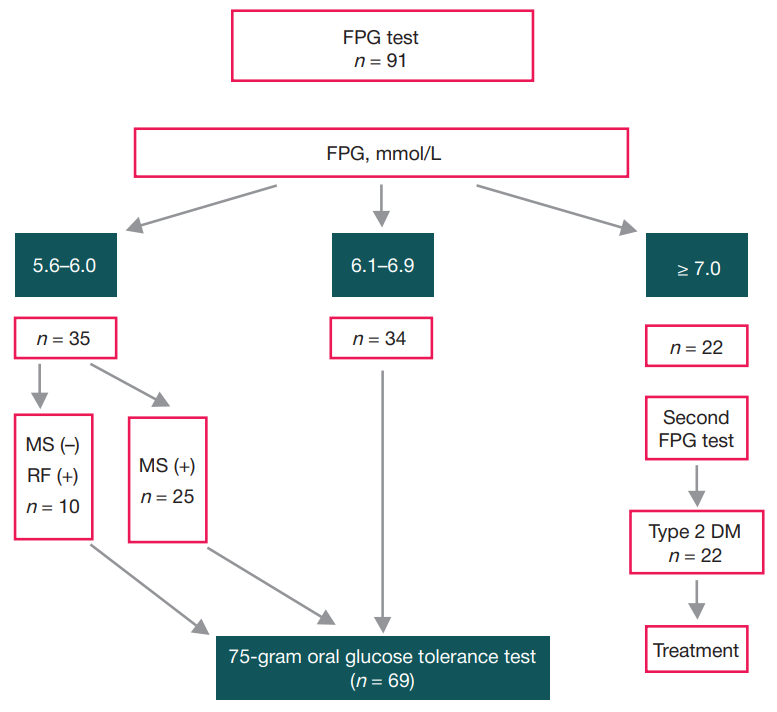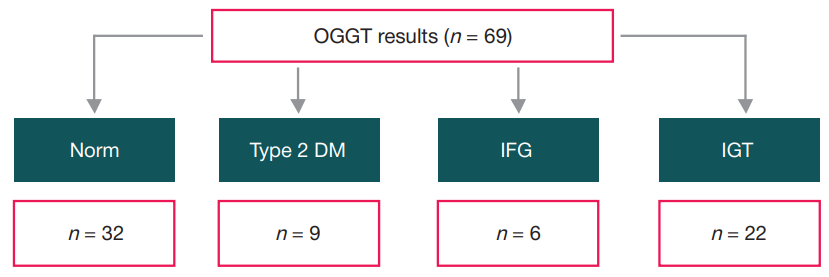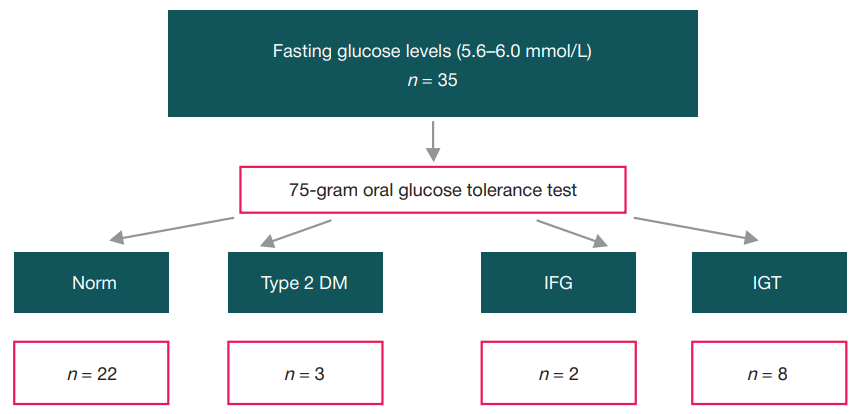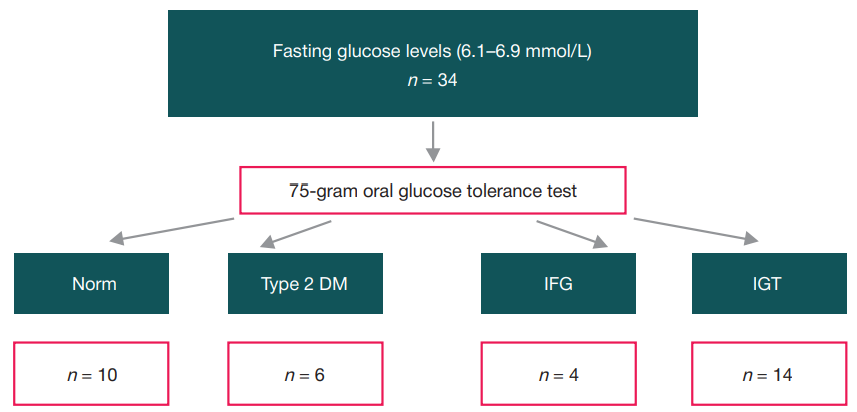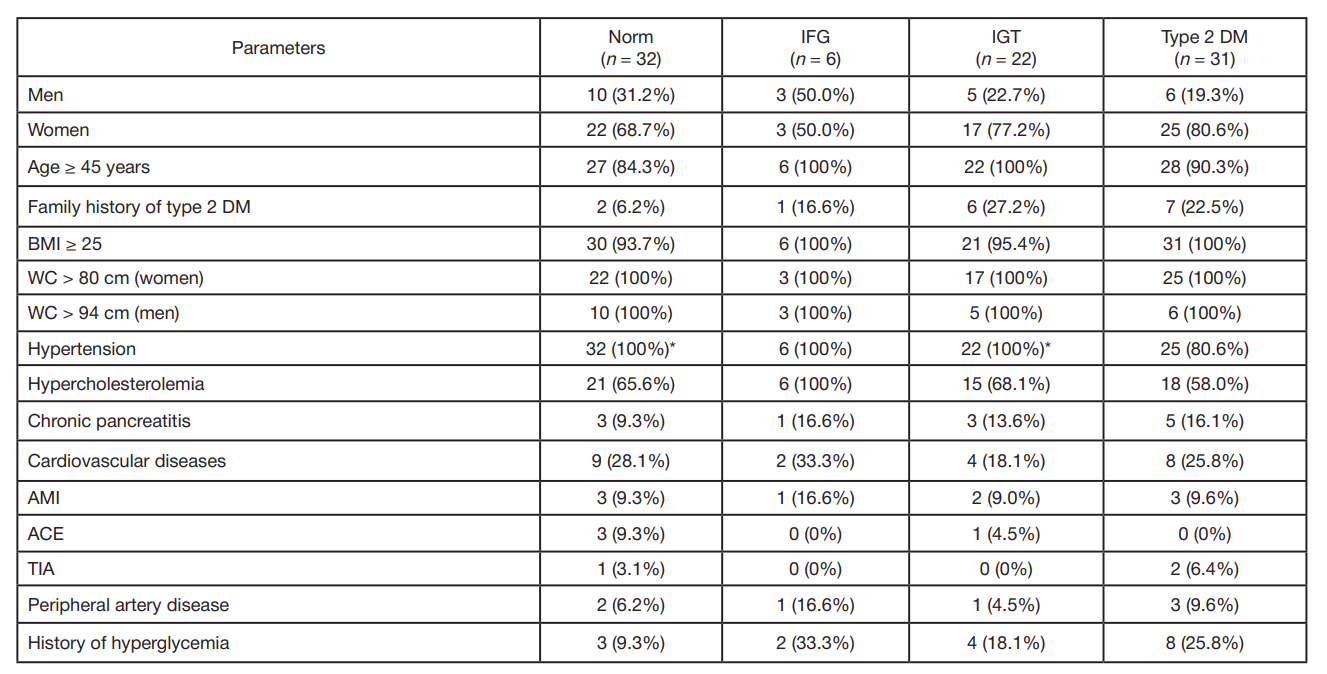
This article is an open access article distributed under the terms and conditions of the Creative Commons Attribution license (CC BY).
ORIGINAL RESEARCH
Frequency of carbohydrate metabolism disorders in day-care patients with borderline fasting blood sugar levels and at least one risk factor for diabetes mellitus
1 Department of Endocrinology, Federal Clinical Centre of High Medical Technologies, Moscow Region, Novogorsk, Russia
2 Tambov Central Regional Hospital, Pokrovo Prigorodnoe Rural Settlement, Russia
3 Pirogov Russian National Research Medical University, Moscow, Russia
Correspondence should be addressed: Valentina V. Boeva
Ivanovskaya st., 3, Novogorsk, Moscow region, Russia, 141435; ur.xednay@VVaveoB
Author contribution: all authors participated in conceiving and planning the study, collected and analyzing the data. Boeva VV prepared the study for publication.
